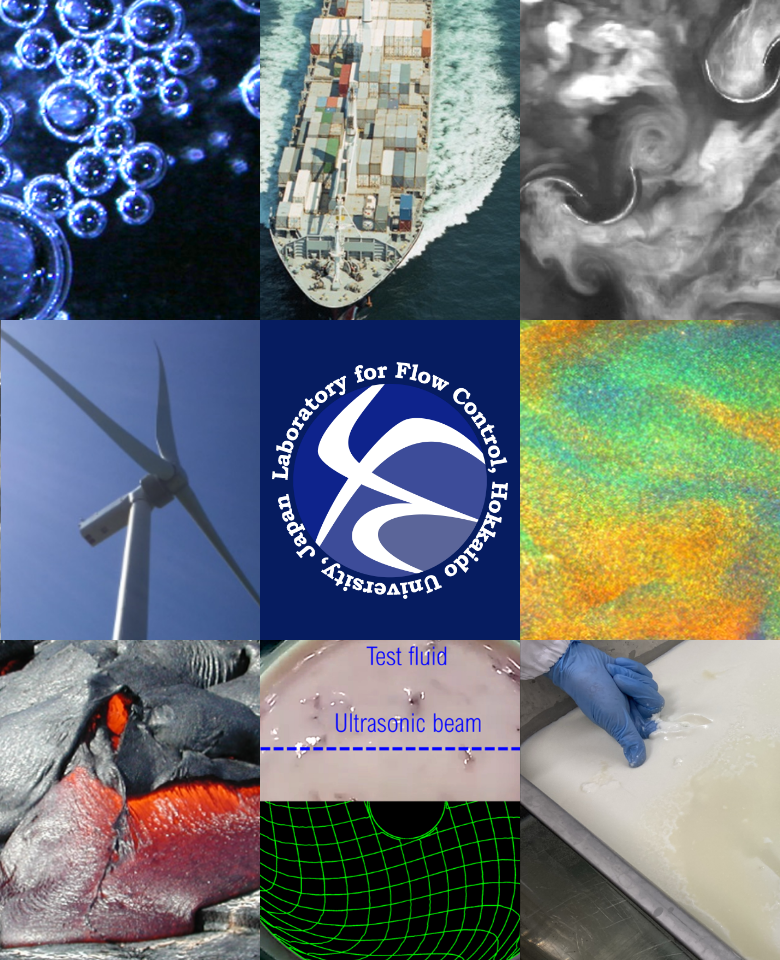

Laboratory for Flow Control-Fluid mechanics experiment for science & technology-

Ultrasonic spinning rheometry (USR)
– powerful tool to evaluate rheological properties of complex fluids –
Rheology on suspensions of particles/drops/bubbles has rich physics and wide industrial applications. But there had not been effective evaluation tools to quantify the rheology; commonly distributed torque-type rheometer/viscometer requires a thin fluid layer to ensure a constant shear rate acting on the test fluid and O(100 μm)-sized ingredients may induce critical errors on the evaluation. Ultrasonic spinning rheometry (USR) has been established to overcome this problem. It utilizes velocity profile information measured by UVP explained above and inverse analysis on Cauchy’s equation of motion and a constitutive equation with substituting the velocity information. Notable advantages are estimations of quasi-local and quasi-instantaneous rheological properties. Thanks to a relatively large measurement volume of UVP, USR allows the ingredients to be contained and the velocity profile measurement by UVP provides instantaneous estimation of a viscosity curve in a shear rate range distributed in a test fluid. Details of the theory and applications are summarized in the special page of USR. Application of USR is widely spread across suspensions, polymer solutions, clay dispersions, and fluid foods.
You can see explanation movie from the link below:



